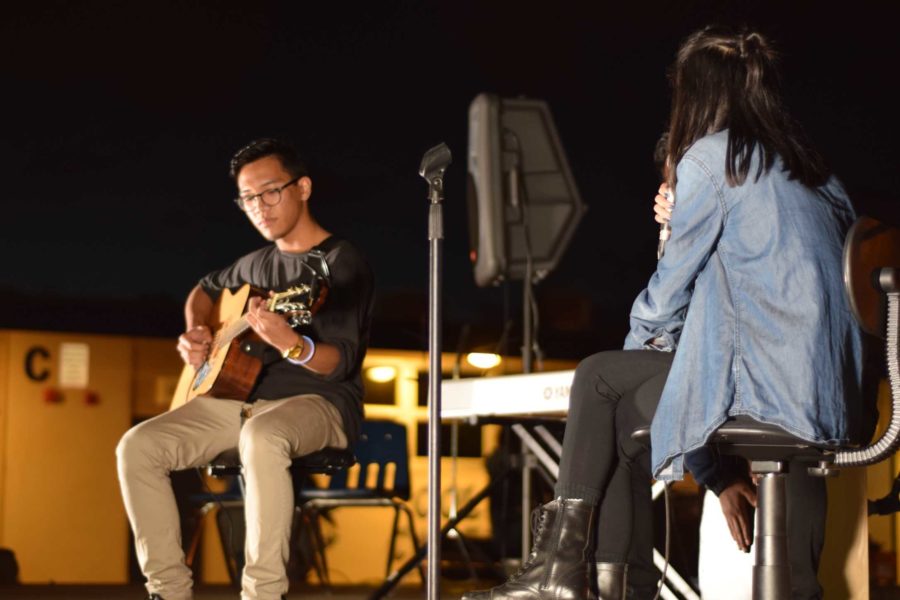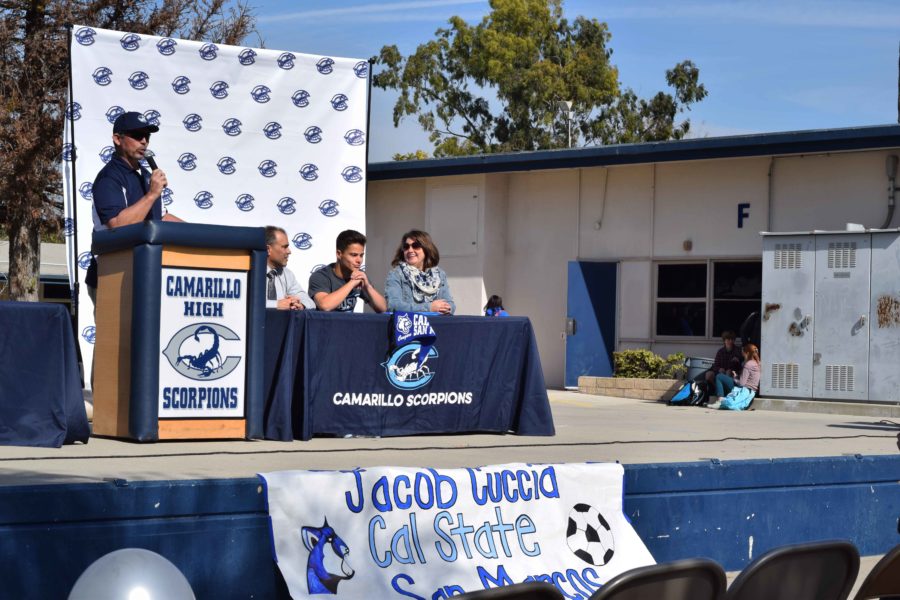Of Helmets and Mortarboards
Senior Jacob Cuccia signs to play Division II soccer for Cal State San Marcos.
While a majority of Cam High’s seniors wait with anticipation for college acceptances, a select number of student-athletes, who have committed to schools to play their respective sports, are already committed to a university.
Recruitment can start as early as during an athlete’s freshman year, ending around the second half of senior year. Athletes may reach out to college coaches via phone, email, or a visit to their office on campus. They may also express their interest to schools through a verbal agreement, and if the university wants to recruit them, can later commit by signing the National Letter of Intent.
Athletes may sign as early as November at the beginning of the school year, with the final signing date in August of the following summer. Students can sign to a school as early as their freshman year and may be offered up to a full-ride athletic scholarship, with additional merit-based scholarships they may apply to on their own.
According to Nike Reid, senior who committed to the University of Chicago for track earlier this year, much of the recruiting process includes persistence on the student’s part. “You’ve got to be interested yourself. The emails to coaches and head coaches are always on school websites, I emailed them with my times, grade, test scores, and interests. Not every coach responds, so it’s important to be persistent. Most colleges have recruiting directors that contact high school athletes,” he said. Reid will be competing at the Division III level. “Being fast, good grades and test scores help a lot when it comes to certain types of schools. It’s important to be a good talker and show the coaches that you are interested.”
There are three National College Players Association (NCAA) divisions for sports: I, II, and III. Division I schools have the biggest student body, largest budgets, and give the most athletic scholarships, where full athletic scholarships are most common. Division II schools offer less athletic scholarships, with most Division II athletes receiving partial scholarships. Division III, the largest of the three divisions, includes around 444 institutions, but offer no athletic scholarships. However, a majority of Division III athletes are on some form of academic or need-based scholarship. These schools have the largest percentage of the student body participating in sports.
According to the NCAA, to be eligible to play sports in college, high school student athletes must stay above a minimum GPA of 2.3 and complete 16 core courses, which includes 4 years of English, 3 years of math (Algebra 1 or higher), 2 years of natural or physical science, 2 years of social science, 1 extra year of English, math or science and 4 years of religion, philosophy, foreign language or additional years of any of the categories above. However, high school GPA maintenance requirements after recruitment vary depending on the college they attend.
The application process for student athletes is mostly the same as a regular applicant- though some committed athletes are required to apply early action. Committed athletes also only need to apply to the one school, and cannot apply anywhere else. “[Being committed for a sport] made the process relatively easy because I only had to apply to one school and already knew I was admitted around October,” said Reid.
Megan Wall, junior and a member of the girls’ volleyball team, committed to play Division I volleyball at Boston College at the end of her sophomore year. “I was […] touring colleges I had been talking to, and I ended up calling Boston. I toured their campus and fell in love with it,” she said. “All the girls [on the current team] were so sweet. They offered me admission and I knew that’s where I wanted to go.”
Wall has been offered a full ride, four-year athletic scholarship, and plans on signing her National Letter of Intent as a senior in Nov. of 2017.
Sebastian Sanchez, senior and Cam High football captain, will be playing Division I football at the University of Northern Colorado. He started playing football in eighth grade, with former experience in flag football during elementary school. “I played at St. Bonnie’s as a freshman, and we had players [going] to USC and University of Oregon. I saw them go, and I wanted […] to play football for college,” Sanchez said. “I have a 65% athletic scholarship, so that covers full tuition and books. With my application, I will get somewhere from $2000-$5000, and I can also apply for merit-based scholarships at the school.”
In order to prepare for the upcoming college sports season, some athletes have been training even harder than they were before. “I was on a less competitive team, and I knew that to become a college athlete, and in order to get there, I was going to have to change teams to get to a better team, to get to a better competition, to get up [to that level],” said senior Jacob Cuccia, who will be playing Division II soccer at CSU San Marcos. “I would prove myself to get to the college level.”
Life as a college athlete requires plenty of time, effort, and commitment. “[Student life] will definitely be different [in college] because I’m going to have practice every day during season and miss a bunch of classes due to games, like traveling,” Cuccia said. “I have to work my class schedule around my soccer schedule, instead of being able to take whatever classes I want.”
Practice hours vary for every athlete, depending on sport and division. For Wall and Reid, they will be practicing about 3 hours per weekday, while Sanchez figures he will practice even more.
Due to the time constraints of a busy schedule as a college athlete, students are allowed a year in extension of their scholarships in case they need an extra year to finish required courses for their degree, according to the NCAA. They must also stay above the minimum GPA requirement for athletes, which varies by college and division as well.
“I knew when I was really young that I made the goal for myself to play college soccer,” said Cuccia. “I’m very blessed and thankful that I was able to have the opportunity, because I know not everyone gets the opportunity [to play sports in college].”

Hello! My name is Uyen (pronounced You-when), and this is my first year working with the Stinger! I'm heavily involved with other areas of the school,...

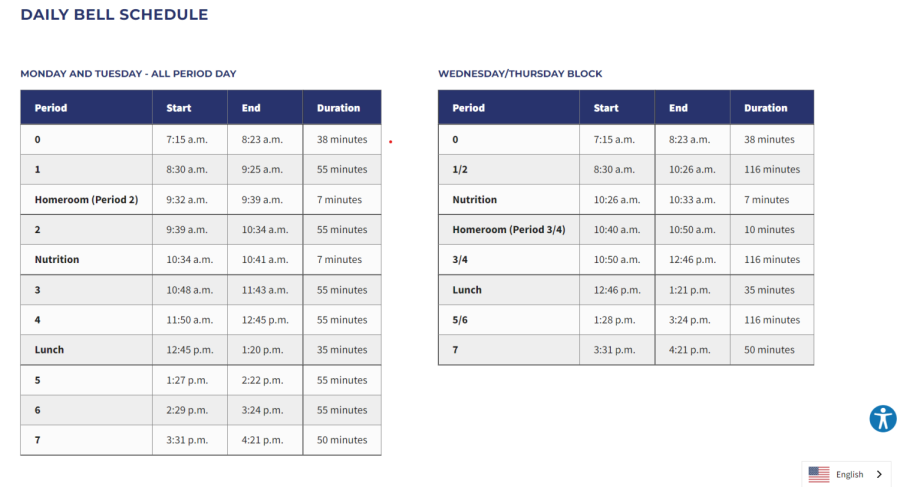






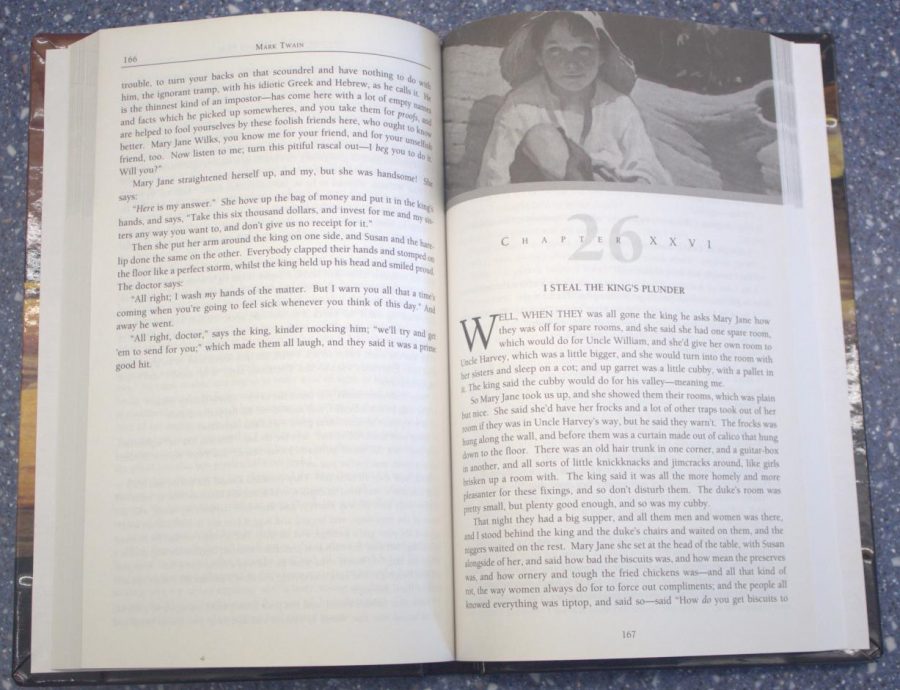







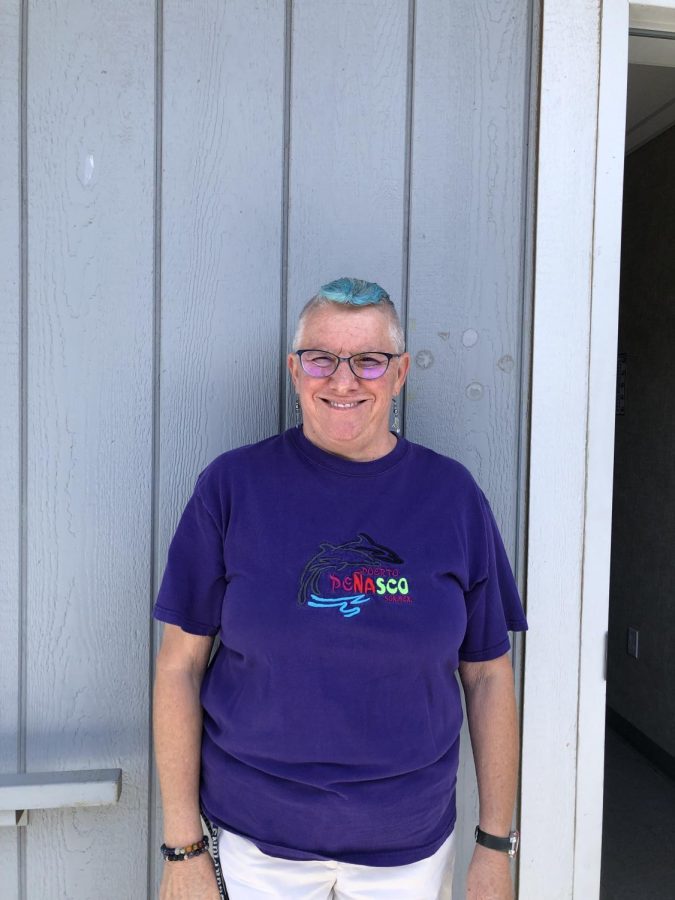


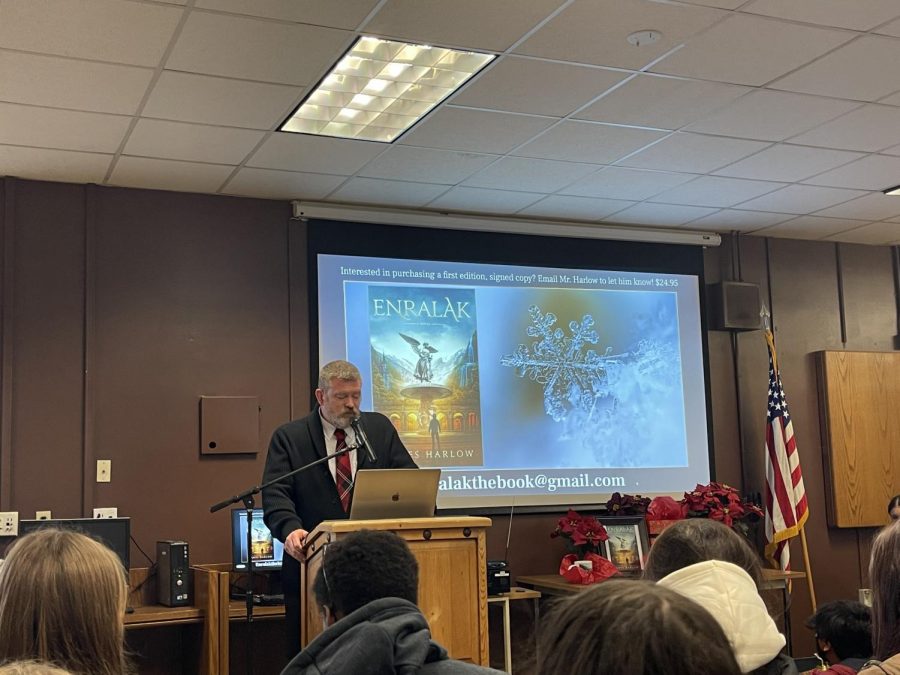
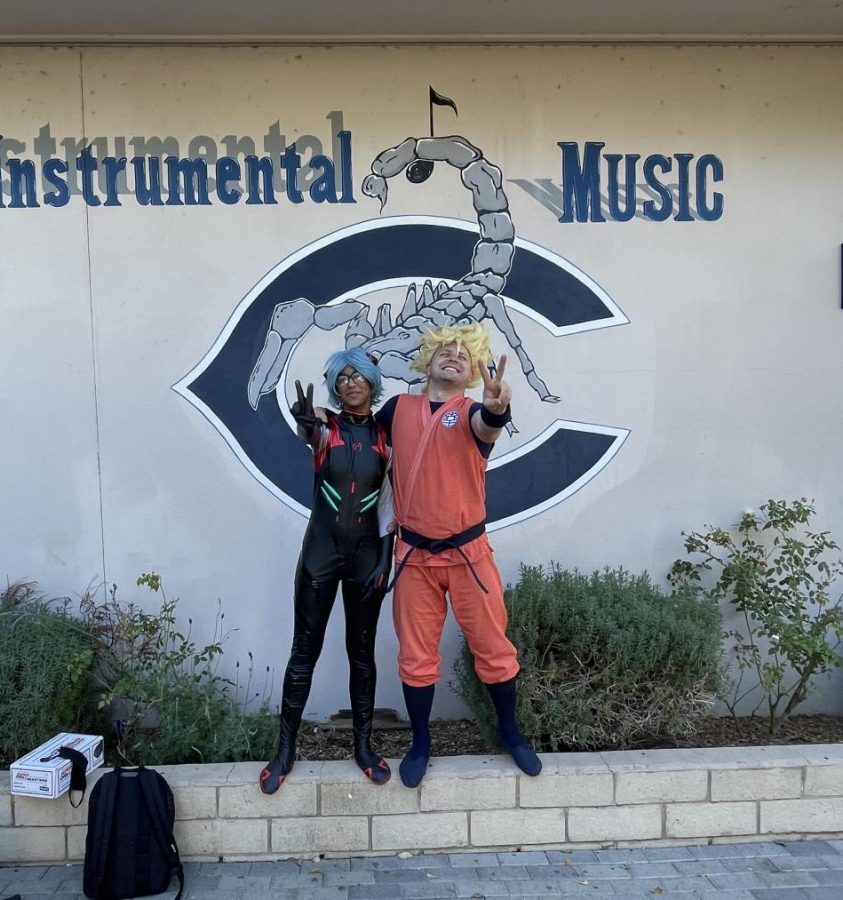
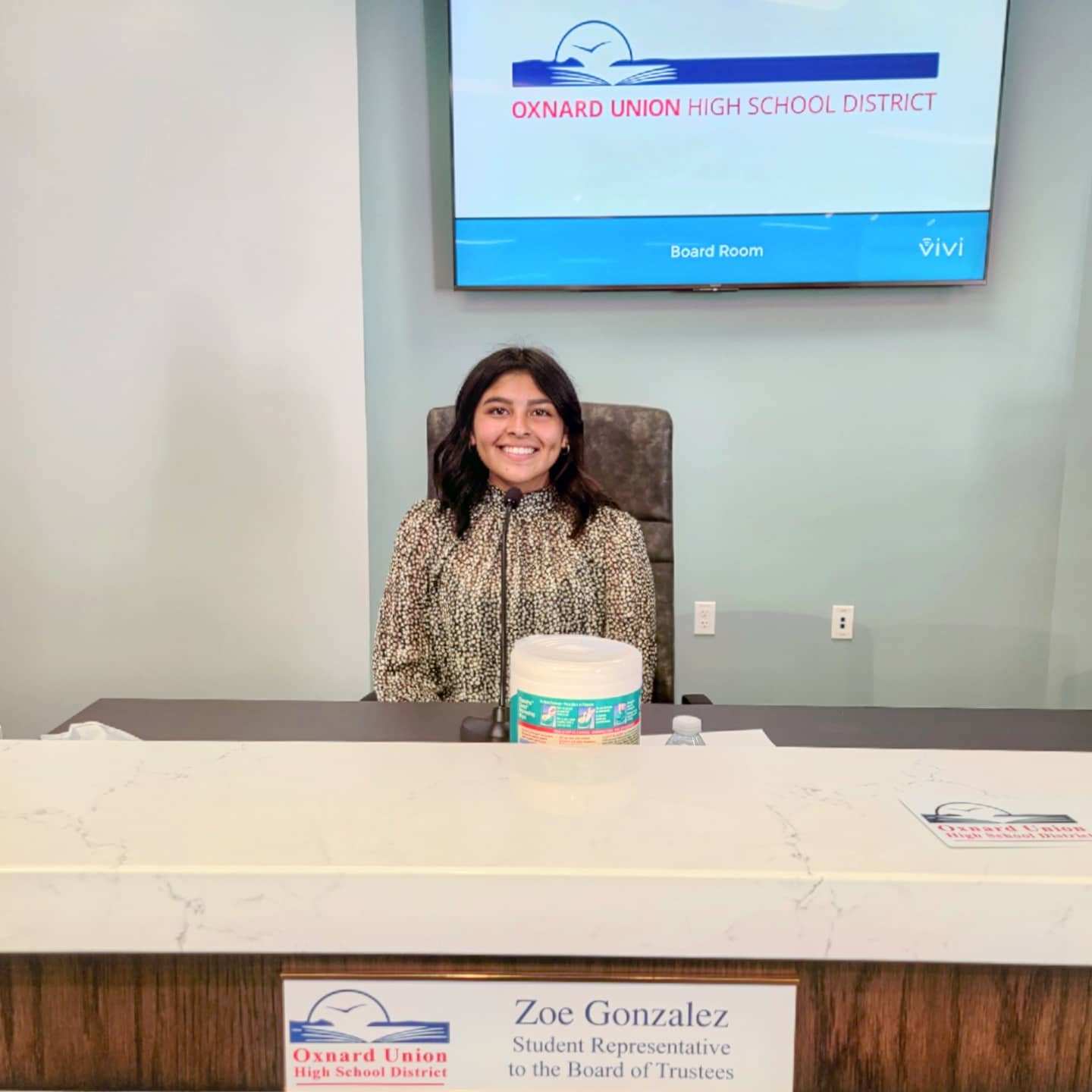


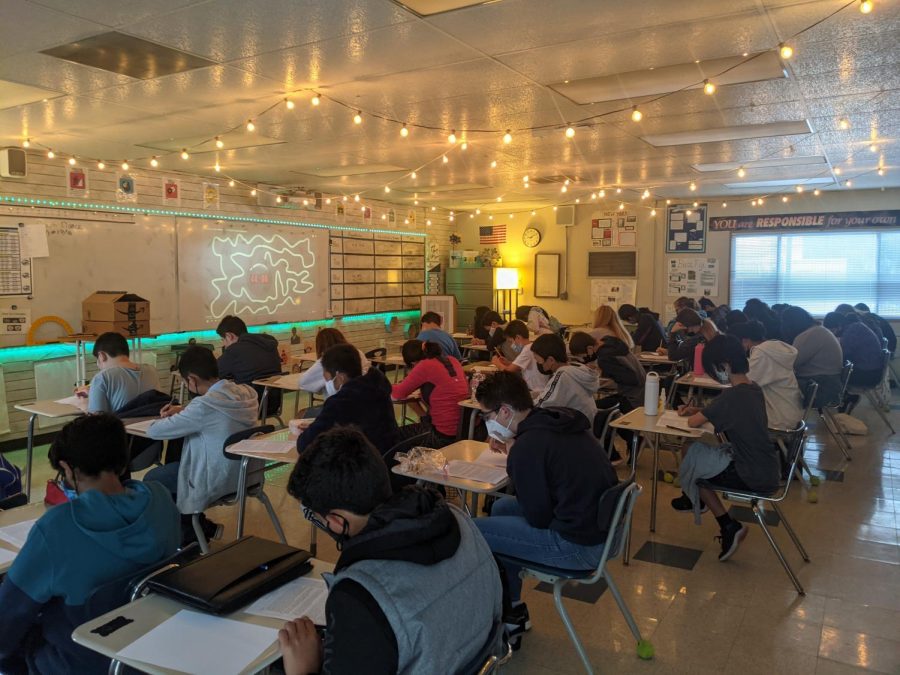


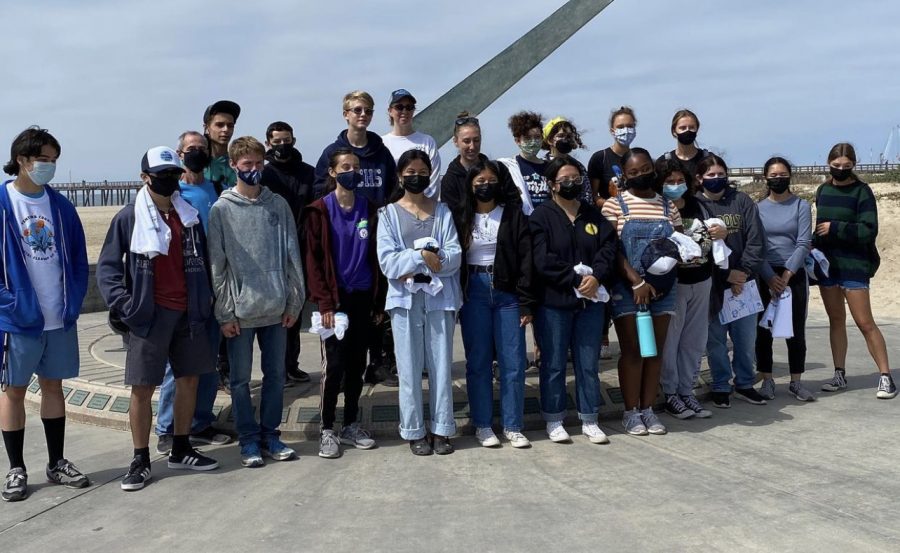

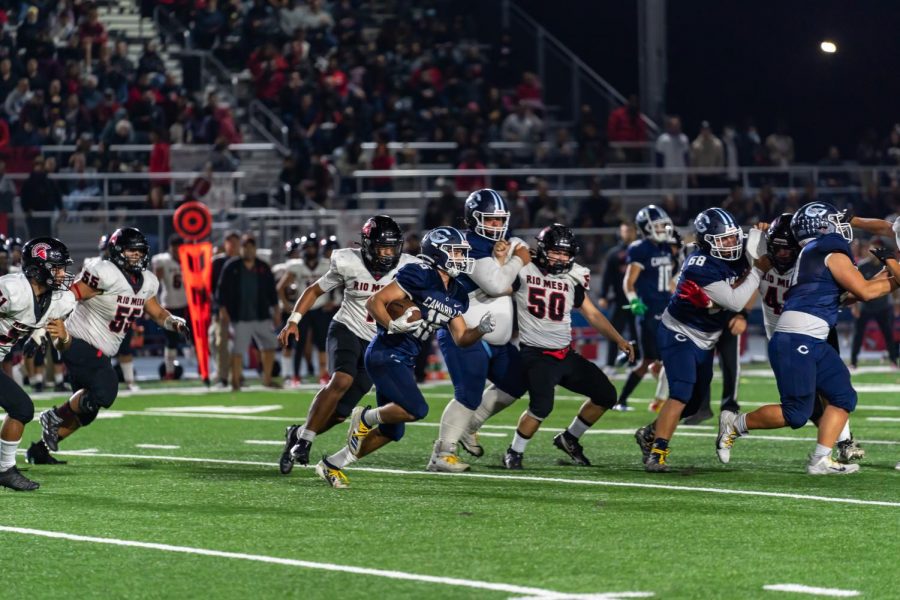






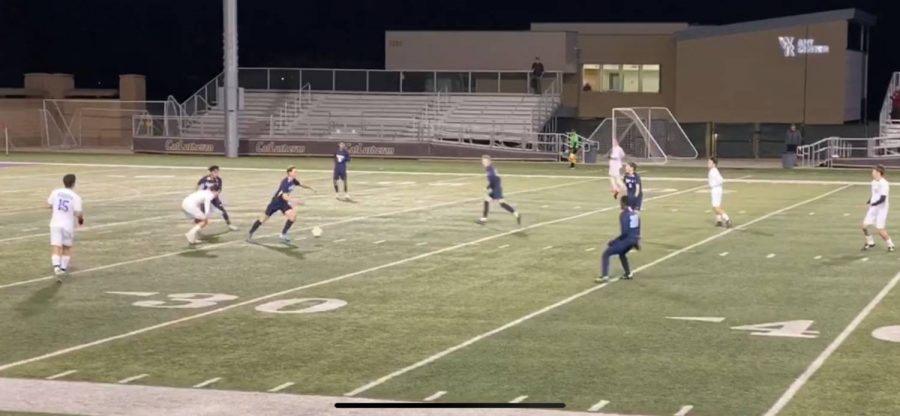





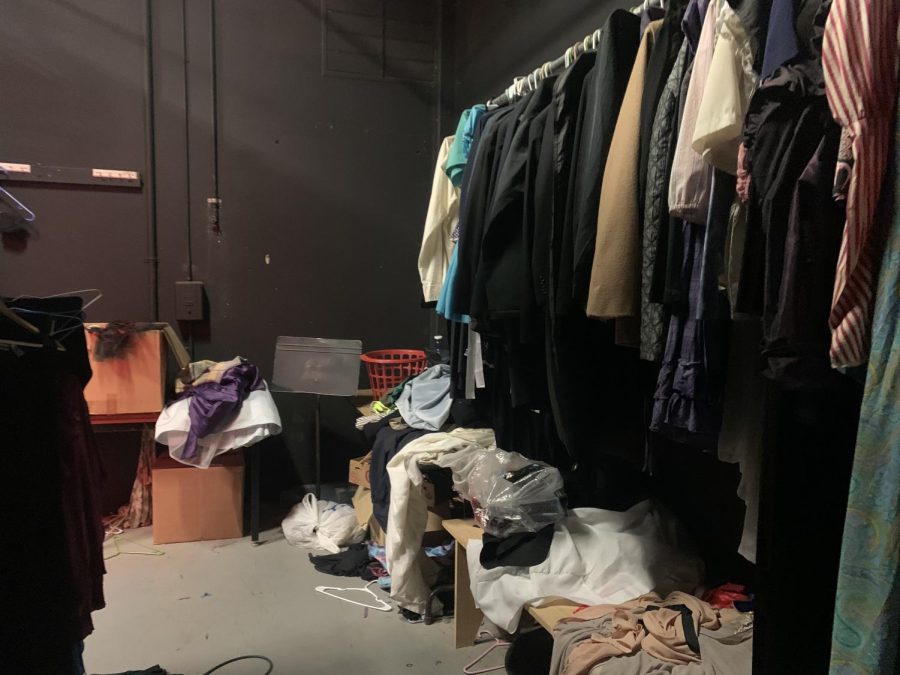



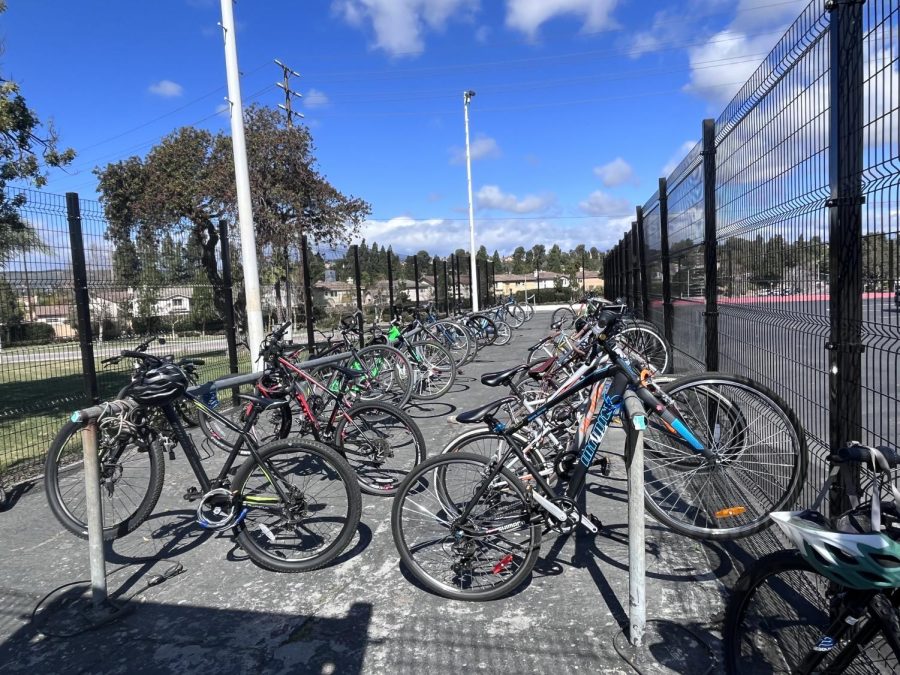



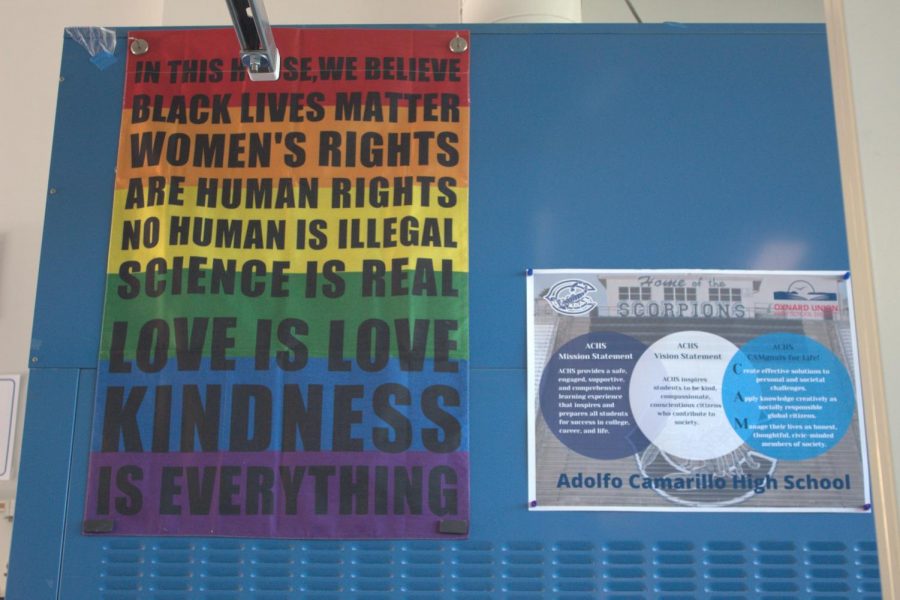









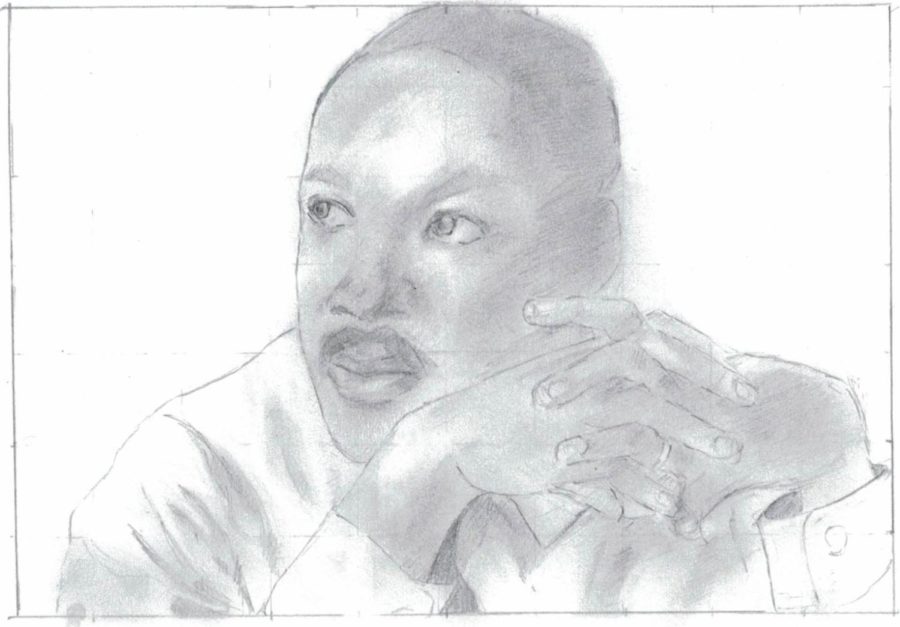


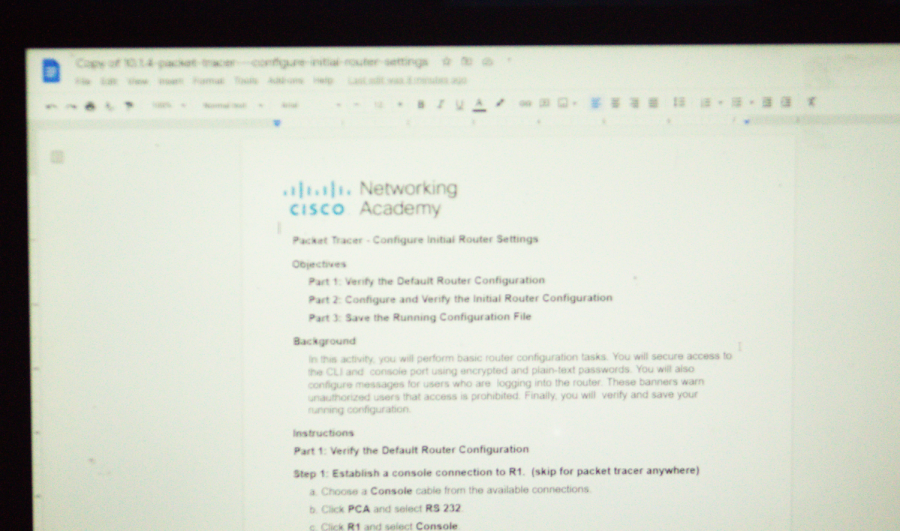



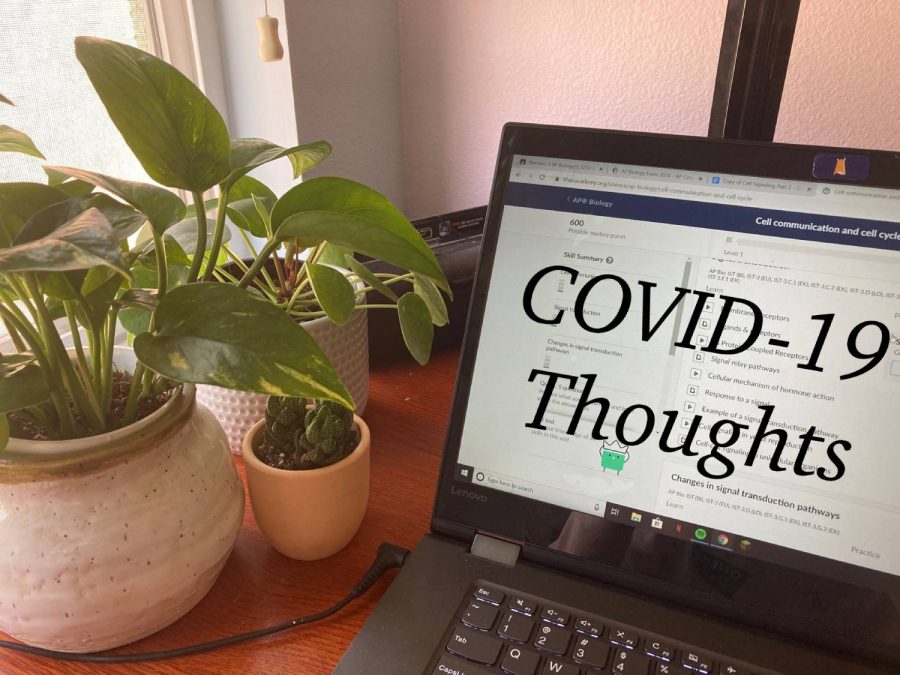

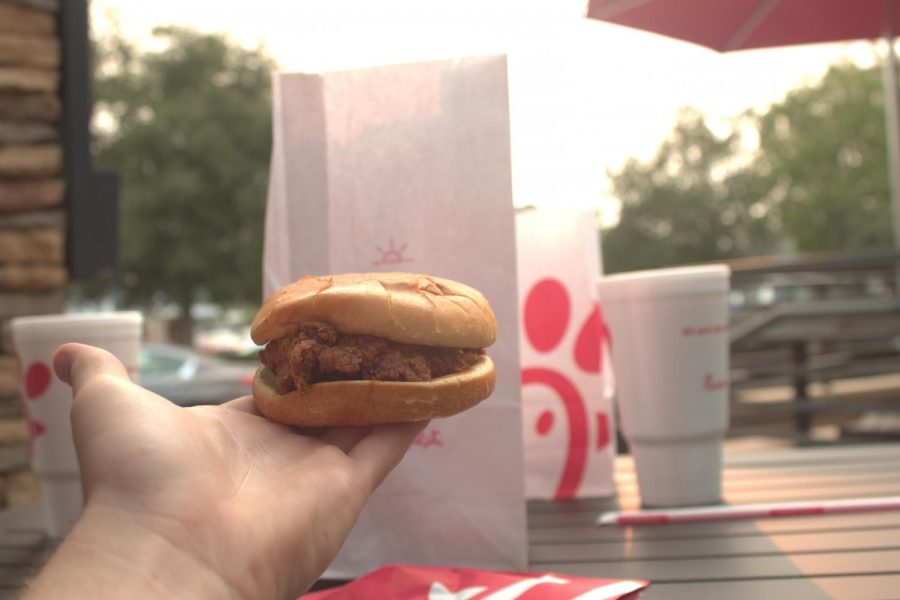











![Senior Ditch Day... Relaxation or Truancy? [Video]](https://achsstinger.com/wp-content/uploads/2017/10/IMG_7119-900x599.jpg)
![Heavy Rain Hits Cam High [video]](https://achsstinger.com/wp-content/uploads/2017/02/maxresdefault-900x506.jpg)
